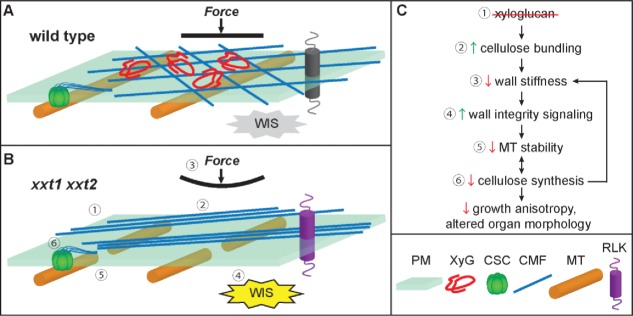Figure 1.
A proposed model of how xyloglucan affects cellulose and cortical MTs to control plant cell expansion and organ morphology. Compared with wild type (A), in xxt1 xxt2 mutants (B and C), the loss of XyG (1) promotes CMF aggregation and bundling (2), reducing wall stiffness (3). Decreased wall stiffness triggers wall integrity signaling (WIS) (4), possibly triggering changes in the expression of MT-associated proteins, resulting in unstable MTs (5). Importantly, cortical MTs can respond changes in wall mechanics directly or through modulations in MT-associated protein abundance or activity. MTs guide CSCs biosynthesis at the plasma membrane, and reductions in MT stability result in reduced cellulose synthesis (6). Together, these changes reduce growth anisotropy and alter plant organ morphology. PM, plasma membrane; XyG, xyloglucan; CSC, Cellulose Synthesis Complex; CMF, cellulose microfibril; MT, microtubule; RLK, receptor-like kinase.

